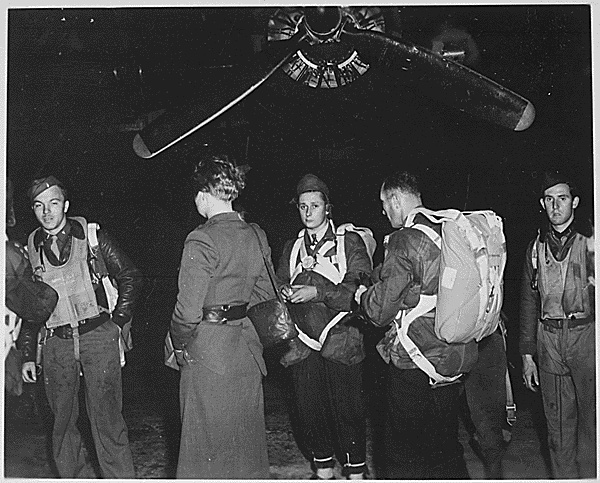All this may seem to imply some deeper judgment about the city—that I think it’s wanton and unregulated, a “Where’s Waldo?” of Boschian perversion. But I will always defend New York from those sorts of charges—after all, no one can talk shit about my mother but me. The issue isn’t that New Yorkers leer, jeer, curse, and shit in public. It’s that the city’s messy scrum was a poor fit for a chronically ill child with obsessive-compulsive tendencies and a preternatural inability to look both ways when crossing the street.
It took me years to understand that most people accept New York’s mayhem as some kind of toll, a small price to pay for the panoply of delights available to them at a moment’s notice—whoever said “Nothing good ever happens after midnight” has never lived in New York. But anyone who has ever fallen in love with the city knows that they will accept myriad slights just to stay in that relationship—cramped apartments, troublesome neighbors, two trains and a bus home, the night shift. How many Hollywood movie plots hinge roughly on the idea that the hero will do anything, anything at all, not to be shipped back to the suburbs? It was my parents, however, who had chosen that plot; I was simply the culmination of it.
My late grandmother—my primary confidant, whose house in rural Connecticut I considered to be the apex of peace—would sometimes shake her head and tell my parents to get me out of the city. “It’s no place for a child,” she would whisper to me when my parents left the room, noting my “terrible nerves.” But my father, her child, had felt the same way about his home town of Old Lyme, which was so insular that nearly every business in the nearby neighborhood of Hamburg was owned by a relative. Recently, we went back there to visit my grandmother’s grave on the twenty-fifth anniversary of her death. Buried there, too, are her aunts, whose names—Tess, Hazel, Ruth, Grace, Helen, Margaret—suggest a good Protestant stability. The longer we spent in the town, the more my father’s shoulders hunched, and he shuffled along like a little boy. “You can’t even imagine how small this place feels,” he told me. “There’s nowhere I can look without being faced with a memory.”
Somehow, it hadn’t occurred to him that I might have similarly complicated feelings about New York. I may not have come of age with a group of stiff Republican relatives whose offspring still own the local Subaru dealership, but growing up is one of a handful of things that everyone has to do. My father’s family was baffled that anyone would ever want to leave the bucolic world of Hamburg. Mine seemed to wonder who could ever see New York as anything other than the center of the universe.
I loved spending time at my grandma’s house because of the slow pace of her days. A trip to the grocery store to buy a half pound of London broil constituted a major outing. We sat side by side reading, opened the mail when it came, took a break at five o’clock for peanuts and tonic water, and I’d be safely tucked into bed by 8 P.M. In the city, by contrast, my mother could pack ten or eleven separate excursions into a single day—or, conversely, spend hours wandering the floors of the discount department store Century 21, striking up endless conversations in the communal dressing room (another place I regarded poorly, having seen one woman elbow another in the face over a cut-price Victoria’s Secret negligee). My mom and her sisters—Jewish girls at the opposite end of the spectrum from the Margarets, Hazels, and Tesses of the world—lived to move. I distinctly remember my mother repeating that “what I love about Manhattan is that if you really want to you can always get from one end to the other in twenty minutes.” (This is not, strictly speaking, true, and I blame the remark for my lifelong inability to properly judge commute times.)
My aunt Susan once said of my mother, “Laurie is a ‘from’ girl—the lox is from one place, the bagels from another, the flowers from someplace else.” Knowing how to get the best out of the city—from discount Manolos to vintage buttons to a ten-dollar blow-dry—gives my mother the satisfaction of a chess grand master stumping her opponent with a series of unexpected moves. But being a “from” girl is about more than the provenance of goods; it’s about living at such high speeds that your inner life can never quite catch up to you. In my mother’s New York, I couldn’t help but feel like a character in a children’s book where, say, a sloth must attend school with human kids, taking great pains to hide his true identity under glasses and a cardigan.
It was largely my discomfort with the world outside our door that sent me to therapy in fourth grade, and put me on anti-anxiety medication by middle school. I’d take a sneaky route to the psychiatrist lest my classmates put two and two together, but, even so, I became marked with the amorphous and dreaded designation “kid with issues.” I was sure there was an alternative reality in which I could be “normal,” some chosen realm in which I could shine. At that stage of life, my chosen realm was the world of “Eloise,” Kay Thompson’s iconic book about a six-year-old girl—a quixotic creation with unbrushed hair and a potbelly, a.k.a. my celebrity look-alike—who lives essentially unsupervised in the Plaza. On the book’s second page, Eloise declares, “I am a city child / I live at The Plaza.” But this city child never seems to set foot outside: everything and everyone she needs exists within the walls of the hotel, and she is its wayward princess.
After years of begging, I persuaded my father to bring me to the Plaza to experience it firsthand. It was my twelfth birthday, and I was roundly unpopular at school, so, as a stand-in for the slumber parties that other girls were having, the two of us spent the night in a twin room on a low floor. By then, the hotel had passed through the hands of Ivana Trump, who had done a grandiose renovation, and the space—drawn in the book with such vivid low-key glamour by Hilary Knight—was hard to recognize. I asked for Eloise’s usual meal of beef medallions, but it wasn’t on the menu, so we ate grilled cheese and watched “The Rainmaker” and I got a bloody nose.
In the months following 9/11, my parents briefly considered moving us out of New York. Like everyone during that endless “after,” they were stunned by the destruction and unsure of what could come next. We piled into the car and drove up to look at a rental house on a rural stretch of road in northwest Connecticut. My visit to Housatonic Valley Regional High School ended with a peek at the agricultural center, where I dreamed of bottle-feeding baby goats and winning trophies in animal husbandry. “I think we could have a wonderful life here,” I said again and again, with the energy of Annette Bening’s character in “American Beauty” chanting, “I will sell this house today!” But it was clear that, though my mother might be worried for her family, she could not be parted from her lover: New York. And, really, what was I expecting? This was the woman who had tried to pay extra to keep her 212 number when we moved to Brooklyn. “From” girl, indeed.
New York and I had a brief moment when it seemed like we might fall in love after all. Of course, it was when boys really entered the chat. I was back from college (in the cornfields of Ohio, which is a great place to send your kids if you want them to return with a fresh appreciation of what New York has to offer) and had only recently shed some of my fearfulness and begun dating in earnest. I found myself waiting in a bar on Ludlow in knee-high boots and red lipstick, excited to be crushingly disappointed; dancing to music by yet-to-be-cancelled men in basements in Chinatown; lying prone in a ransacked house share in Flatbush, shivering with anticipation (or maybe just shivering). I fell in lust at the edges of Park Slope, standing on the aboveground subway platform (much preferred to the other kind) in a dress that had seemed perfect the night before, but in the glaring sun made its absurdity apparent. I fell in love in Bemelmans Bar, at the Carlyle, and again on the Brooklyn Heights Promenade, and once more eating fried clams on City Island. I choked back unrequited passion looking at an installation at P.S. 1, wondering whether every artist had felt this way, and whether that was why artists made anything at all—to hold on to the feeling, or perhaps for revenge.
It was during this time that I was able to write my own story about the city in the form of a television show, “Girls,” which lasted for six seasons. The irony was that the series cemented me, in the minds of everyone I met, as a New York girl through and through. How could they have known that the safest I’d ever felt in New York was either hiding under the covers or pretending to be someone else under klieg lights? The character I played, Hannah Horvath, thought that New York held the key to all her dreams—but, tellingly, she’d grown up in Michigan. (I had been told by countless cabdrivers—soothsayers, all of them—that I seemed like I was from someplace else, because no matter how far off course they drove me, or how late I was running, I always babbled cheerful thank-yous, and unlike other native New Yorkers I had no preferred routes.) Hannah was an expression of homesickness for a place I’d never truly lived in, and of my hope that I could meet New York again under an assumed identity. In the series finale, she left New York and boldly set sail for . . . upstate New York, a story line that signalled how much of a question mark the rest of the world still seemed to me. I wasn’t a natural New Yorker, and yet I had a New Yorker’s certainty that there really wasn’t anywhere else to go.
A few years after “Girls” concluded, when I was in my early thirties, I was deep in the kind of heartbreak that I now know is on the required curriculum for that stage of adulthood but that seemed, in the moment, life-ending and completely unique to me. As if some higher power were sensing my need, work offered me the chance to leave. I’d escaped briefly before, but only to the equally bedevilling city of Los Angeles. This time I was headed farther afield, to explore the elfin mysteries of Wales. It was a sojourn fit for one of the Brontë heroines I had always loved (or so I thought, not realizing the difference between the moors of Yorkshire and the Celtic rain forests of Powys—a place that Charlotte, Emily, and Anne had likely never visited. Like me, the Brontës were homebodies.) In my mind, this break would provide a chance for New York and me to hook up with other people, reignite our feelings for each other, and then realize we were meant to be together all along. We all know how well that plan usually works out for couples.
One job bled into another. One year became the next. Wales—with woods so uncannily green I could compare them only to the computer game Myst—led to London, and London shocked me with its reassuring differences from New York. The city, which is large enough to contain all five New York boroughs twice, had a spaciousness I could not get over, streets so wide that the buildings seemed to be stepping aside for me to pass. Three decades of urban sense memory cleared, as if I had woken up to a system upgrade and damaged files had been erased in the process. Maybe it was the blank slate of it all, the fact that I’d yelped in pain on exactly zero London street corners. But it felt more mystical, like walking into a house I’d been to only in a dream. “Well, hello, London Lena,” a friend cooed when I agreed to go out for a third night in a row. My reputation back home was as a work-obsessed hermit with an inappropriate fear of the “human statue” performers in Times Square. Here, I moved with ease, whether walking on Hampstead Heath or sliding into a black cab, greeted by a gruff “Oy! Where you ’eaded?”
In New York—the fastest city in the world—days had felt like years. In London, years passed like days, which is how I ended up, five years on, realizing that London is my home now, so much so that I call seltzer “sparkling water” and settle for bagels that taste like caulk. Even when Londoners remind me of New Yorkers, the city doesn’t jangle me the way New York does. One recent weekend, a drunk man unzipped his fly to pee on my stoop, not noticing my presence behind some overgrown ivy. “Move it along, sir,” I told him. You are in the wrong place.
On my first journey back to New York after the pandemic—which had kept me away for nearly two years—the experience of walking out of J.F.K. and into the airport cab line was so powerful I nearly keeled over. One day back in the city left me breathless and panicky, outpaced. When friends and I made plans to get together, I’d suggest restaurants that had been shuttered for years. No matter how often I’ve returned in the time since, I’ve found myself standing anxiously at crosswalks, the way I would as a child, unsure when to step off the curb, as if trying to hop into a game of double Dutch. But now the sense of dislocation is temporary. The three-decade fight to mold myself to the city is over.
In Joan Didion’s essay “Goodbye to All That,” about her own decision to leave New York for her native California, she writes that New York is best suited to the very young. My grandmother said that it was no place for a child. All I know for sure is that it was simply no place for me—at least, not forever. And that’s O.K. Sometimes, in a relationship, you both try to show your best and truest selves, but still the other party sees only your worst. Plus, this was the most mature sort of breakup—the sort where we can still have coffee sometimes. It turns out that I felt about New York City the same way so many New Yorkers feel about whatever place they started: it’s just where I was born. ♦
Premium IPTV Experience with line4k
Experience the ultimate entertainment with our premium IPTV service. Watch your favorite channels, movies, and sports events in stunning 4K quality. Enjoy seamless streaming with zero buffering and access to over 10,000+ channels worldwide.

















